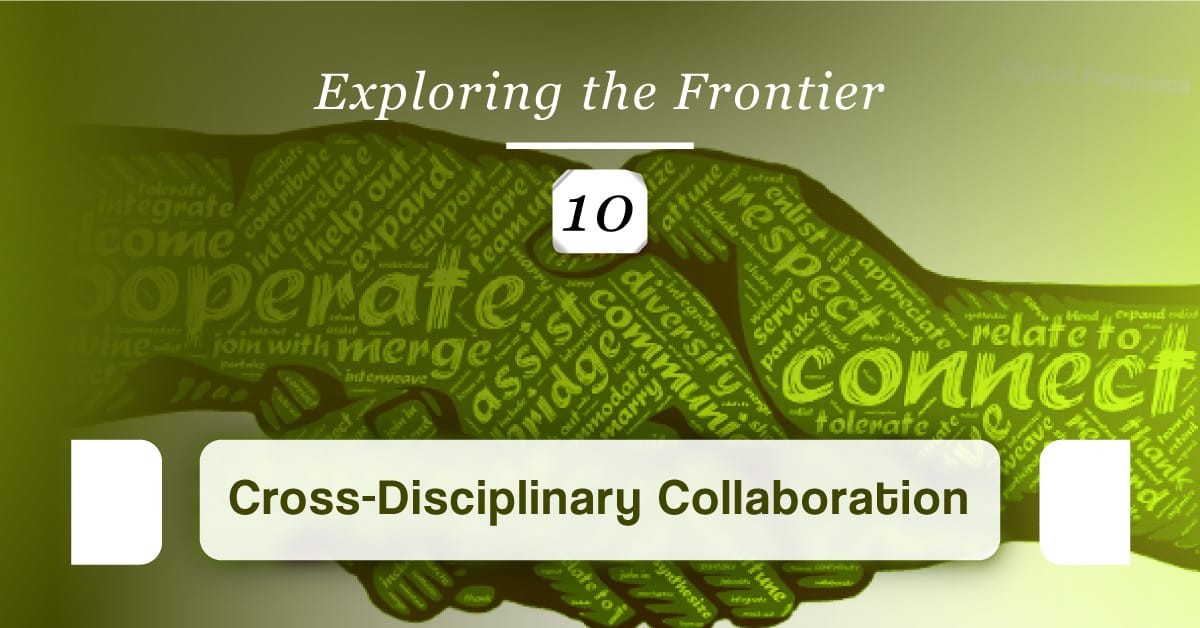(10th in the series of the Top 10 Hottest Topics in Digital Forensics for 2024)
Contributed By: Rochelle Marroquin, B.B.A. in Cyber Security
As the world of digital forensics evolves at an unprecedented pace, the lines between different fields—cybersecurity, incident response, legal compliance, and even data science—are becoming increasingly blurred. Digital forensics professionals are no longer isolated experts working on standalone investigations; instead, they are critical players in a larger ecosystem that requires close collaboration with specialists from a range of disciplines. This cross-disciplinary approach is essential in today’s complex landscape, where a single investigation might involve technical cybersecurity defenses, legal frameworks, and incident response strategies, all intertwined.
In this final article of the “Top 10 Hottest Topics in Digital Forensics for 2024” series, we will explore why Cross-Disciplinary Collaboration is becoming one of the most critical aspects of digital forensics and how professionals in this field are adapting to handle increasingly intricate investigations.
The Need for Cross-Disciplinary Collaboration
Digital forensics has become far more than just data extraction, recovery, and analysis of digital evidence in isolation. The growing complexity of cybercrimes, data breaches, ransomware attacks, and other digital incidents means that forensic professionals must work closely with experts in other fields to ensure investigations are thorough and comprehensive. Some of the areas where digital forensics is converging with other disciplines include:
- Cybersecurity:
Digital forensics and cybersecurity tasks have now intersected with incident response measures. In the wake of a data breach or cyberattack, forensic experts are called upon to handle incidents, with cybersecurity professionals to identify the attack vector, assess the damage, and collect evidence for legal proceedings. A sound understanding of cybersecurity defenses—firewalls, intrusion detection systems (IDS), and endpoint protection—is essential to unraveling the full scope of an attack. The convergence of DFIR creates a challenge to seamlessly incorporate preventive measures for incident response along with forensic analysis.
Additionally, forensic experts must understand cyber risk management frameworks and security protocols to make sense of how an organization’s systems were compromised. DFIR teams require rapid decision-making for effective containment and adaptability to changing strategies. The collaboration between these two fields ensures that the evidence collected is both relevant and admissible in court while also aiding in immediate incident response efforts.
- Legal Compliance:
As digital evidence becomes more integral to legal cases, forensic professionals are finding themselves working closely with attorneys, compliance officers, and legal experts. For instance, legal counsel provides direction to forensic experts—i.e., where evidence might be discovered—throughout legal proceedings. Legal knowledge is necessary to ensure that digital evidence is collected, preserved, and handled in ways that meet stringent legal requirements and data privacy regulations, such as the General Data Protection Regulation (GDPR) or the California Consumer Privacy Act (CCPA).
Forensic professionals must ensure that they are up to date on the latest legal standards governing the admissibility of digital evidence, chain of custody protocols, and laws around data privacy and encryption. Close collaboration with legal teams ensures that forensic reports are not only accurate but also compliant with all applicable legal frameworks, which is crucial for the evidence to hold up in court.
- Incident Response:
Digital forensics is playing an increasingly important role in incident response. When a security incident occurs—such as a ransomware attack, a data breach, or an insider threat—the forensic team is typically one of the first responders alongside cybersecurity personnel. Collaboration is essential to prevent the loss of evidence, mitigate the impact of the incident, and develop a strategy to stop the attack from spreading further. DFIR teams must avoid further exploitation in an effort to preserve and maintain the integrity of all evidence; the destruction of evidence can have an impact on the chances of winning a case.
Forensic professionals must work closely with incident response teams to analyze logs, gather critical data about the attack’s origin, and identify threat actors’ methods. This cross-disciplinary teamwork not only helps organizations recover from attacks but also provides critical insights that can prevent future incidents.
- Data Science and Analytics:
With the explosion of big data and machine learning, digital forensics is also becoming intertwined with data science. Investigations today often involve analyzing large volumes of data, which requires advanced data analysis and visualization techniques. Forensic professionals must collaborate with data scientists to develop algorithms, automate specific tasks, and create visual representations that make complex data more understandable.
By leveraging data analytics, forensic professionals can quickly identify patterns, anomalies, or suspicious behavior in data sets that would be impossible to uncover manually. If necessary, data analysts are able to interpret the data gathered for forensic examiners, translating complex findings into actionable insights that support investigations. This collaboration is essential in fields like fraud detection, insider threat investigations, and cyber espionage.
The Growing Skill Set of Digital Forensics Professionals
As the demand for cross-disciplinary collaboration grows, so does the skill set required of digital forensics professionals. Forensic experts can only operate within their domain; they must develop at least a foundational understanding of adjacent fields, including cybersecurity, data analytics, and legal compliance. Some critical skills that forensic professionals will need to master include:
– Cybersecurity Knowledge: Understanding how security systems work, common attack vectors, and the methods used by cybercriminals is now essential for forensic professionals. This knowledge not only helps in the investigation but also aids in preventing future incidents.
– Legal Acumen: Knowing how to handle digital evidence in the laboratory and a legally defensible manner is paramount. Forensic professionals must be familiar with chain of custody, data protection laws, privacy regulations, and the rules of evidence to ensure their findings are admissible in court.
– Data Analysis and Visualization: As investigations increasingly involve large amounts of data, forensic professionals need to be skilled in using data analysis tools and creating visual representations of their findings. These skills can be particularly helpful when presenting complex evidence to legal teams or stakeholders who may need a technical background.
– Communication and Collaboration: Forensic experts must be able to communicate effectively with professionals in other fields. This includes translating highly technical forensic data into presentable evidence for cybersecurity teams, legal professionals, or company executives. Strong interpersonal skills are becoming just as important as technical know-how in this collaborative environment.
The Future of Cross-Disciplinary Collaboration in Digital Forensics
The integration of digital forensics with other fields will only deepen as the technology landscape continues to evolve. New threats, such as those posed by artificial intelligence (AI), autonomous vehicles, and the Internet of Things (IoT), will require forensic professionals to collaborate with a broader array of experts. Additionally, the rise of cross-border cybercrimes will necessitate international cooperation and collaboration across legal, technical, and governmental entities.
By embracing cross-disciplinary collaboration, digital forensic professionals will be better equipped to handle complex investigations, mitigate risks, and ensure that justice is served in the digital age. This shift towards greater integration is not just a trend—it is the future of the field.
Conclusion
In the world of digital forensics, no single field holds all the answers. The complexity of modern-day cybercrimes, data breaches, and legal challenges requires collaboration across multiple disciplines. As digital forensics professionals embrace a cross-disciplinary approach, they will be better positioned to navigate the evolving challenges of their field, ensuring that their investigations are thorough, accurate, and legally sound.







